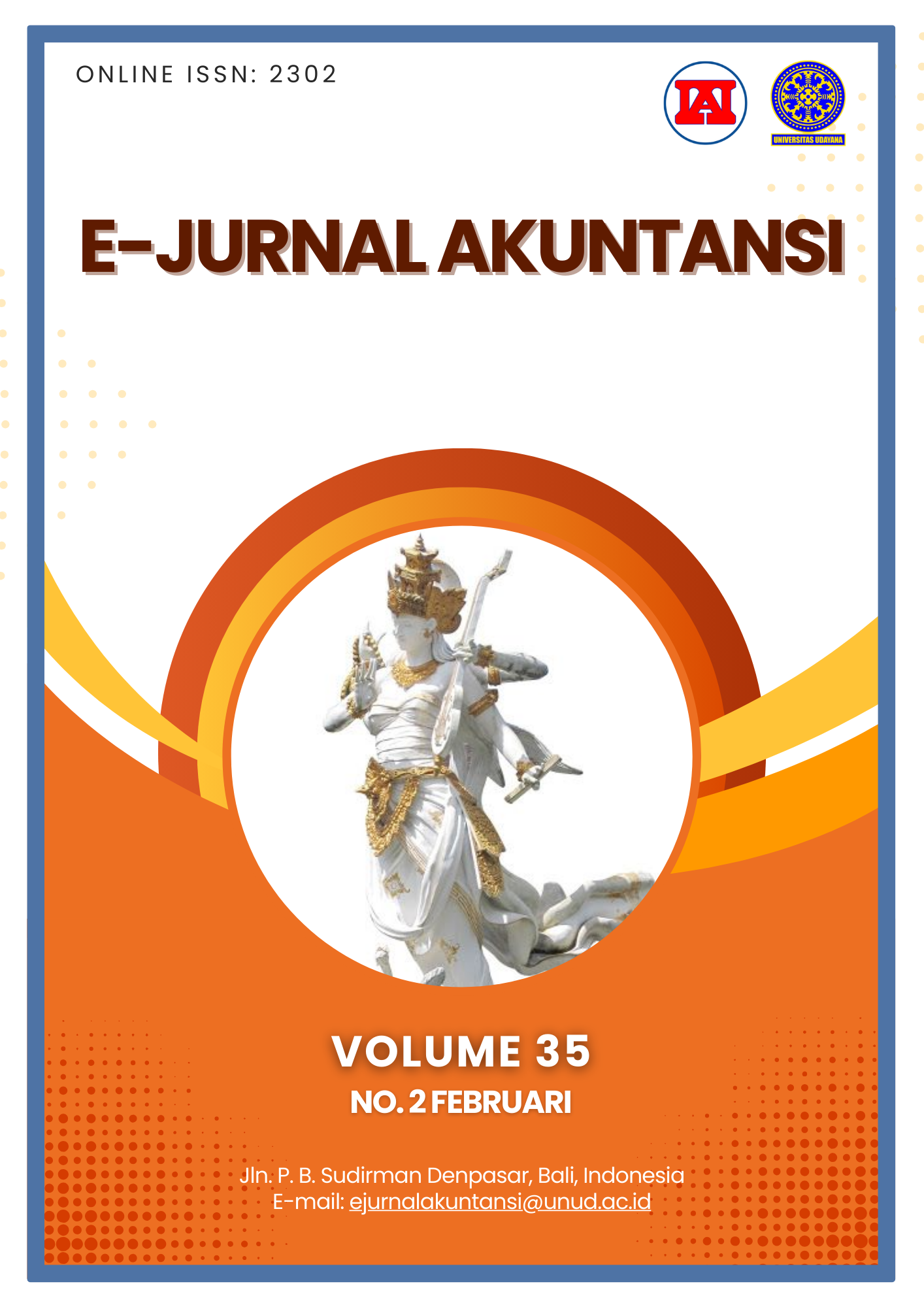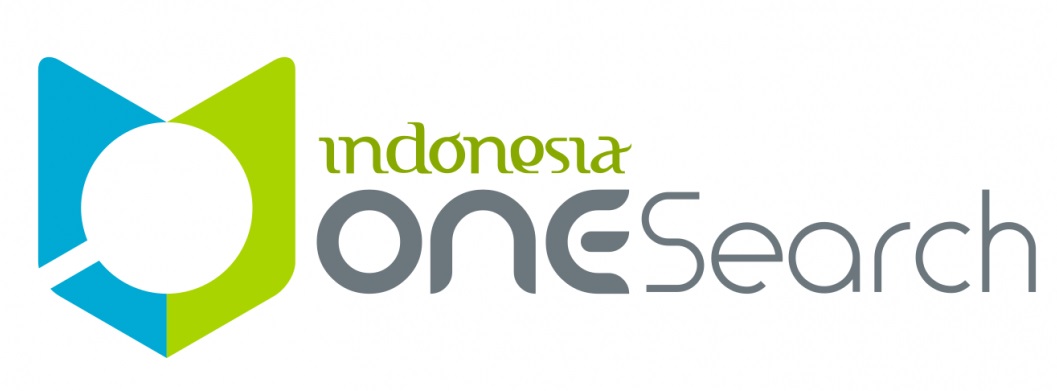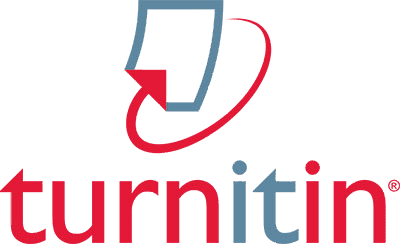Assessing Fraud Pentagon Theory's Impact on Financial Statement Fraud Risk in Indonesian Mining Firms
Abstract
This study examines the applicability of the Fraud Pentagon Theory in detecting fraudulent financial reporting within the mining sector. The theory comprises five elements—hubris, pressure, opportunity, justification, and capability—which collectively offer a more comprehensive framework for understanding the motivations and conditions that facilitate financial statement fraud. The research population includes all mining companies listed on the Indonesia Stock Exchange from 2016 to 2019. Using purposive sampling, 48 companies were selected for analysis. Logistic regression was employed to evaluate the influence of Fraud Pentagon indicators on the likelihood of fraudulent financial reporting. The findings indicate that variables such as auditor changes, company characteristics, external pressure, financial stability, and the pursuit of financial targets significantly influence the risk of misleading financial disclosures. Meanwhile, factors including the frequency of CEO photographs in annual reports, changes in board directors, weak internal controls, and managerial ownership were found to have a more limited effect. These results highlight the importance of a multidimensional approach in detecting and mitigating financial reporting fraud. Stakeholders such as regulators, auditors, corporate management, and boards of commissioners should consider these indicators when assessing fraud risk to enhance transparency and safeguard the integrity of financial information.
Keywords: Fraud Pentagon Theory; Potential Fraud; Pressure; Opportunity; Rationalization; Ability; Arrogance.
Downloads
References
Andriani, A. (2018). Pengujian Teori Fraud Pentagon dan Fraudulent Financial Reporting Pada Jakarta Islamic Index. Medan: Pascasarjana Universitas Islam Negeri Sumatera Utara.
Aprilia, A. (2017). Analisis Pengaruh Fraud Pentagon Terhadap Kecurangan Laporan Keuangan Menggunakan Beneish Model Pada Perusahaan yang Menerapkan Asean Corporate Governance Scorecard. Jurnal ASET (Akuntansi Riset), 9(1), 101-132. https://doi.org/10.17509/jaset.v9i1.5259
Association of Certified Fraud Examiners. (2020). Report to Nation on Occupational Fraud and Abuse (Global Fraud Study 2020). ACFE.
Basmar, N. A., & Sulfati, A. (2022). Pendekatan Crowe’s Fraud Pentagon Theory dalam Mendeteksi Kecurangan Laporan Keuangan. Jurnal Ilmiah MEA (Manajemen, Ekonomi, dan Akuntansi), 6(3), 398-419.
Cressey, D. (1953). Other People Money: A Study in The Social Pyschology of Embezzlement. Glencoe III.
Damayani, F., Wahyudi, T., & Yuniartie, E. (2017). Pengaruh Fraud Pentagon Terhadap Kecurangan Laporan Keuangan Pada Perusahaan Infrastruktur yang Terdaftar di Bursa Efek Indonesia tahun 2014 – 2016. Jurnal Penelitian dan Pengembangan Akuntansi, 11(2), 151–170. https://doi.org/10.29259/ ja.v11i2.8936
Ernst, & Young. (2012). Deterrence and detection of financial fraud.
Farazida, S.A. (2019). Fraud pentagon dan kecurangan laporan keuangan. EkBis: Jurnal ekonomi dan Bisnis, 2(1), 1-22.
Fauzian, R. (2012). Bumi Resources Manipulasi Laporan Keuangan 2011? Diakses pada tanggal 8 Oktober 2020 dari https://idxchannel.okezone.com
Felicia, Y., & Umar, H. (2022). Faktor Resiko Fraud terhadap Kecurangan pelaporan keuangan Berdasarkan Theory Fraud Pentagon. ACCOUNTHIK: Journal of Accounting and Finance, 7(1), 29-38.
Ghozali, I. (2016). Aplikasi Analisis Multivariate dengan Program IBM SPSS 23 (8 ed.). Semarang: Badan Penerbit Universitas Diponegoro.
Hafizi. (2019). Vousinas' Hexagon Fraud: Determinan Yang Memengaruhi Fraudulent Financial Reporting (Studi Pada Perusahaan BUMN di BEI Tahun 2013-2017). Banjarmasin: Skripsi Fakultas Ekonomi & Bisnis Universitas Lambung Mangkurat.
Hamadi, Y. V., Stephanus, D. S., Wijayanti, D. (2022). Fraud Pentagon Theory: Alat Deteksi Financial Statement Fraud Pada Perusahaan Property Dan Real Estate di Indonesia, Malaysia, Singapura. EL MUHASABA: Jurnal Akuntansi, 13(2), 113-125.
Hantono. (2018). Analisis pendeteksian financial statement fraud dengan pendekatan model beneish pada perusahaan BUMN. Jurnal Riset Akuntansi Going Concern, 13(3), 254-269.
Ikatan Akuntan Indonesia. (2018). Standar Akuntansi Keuangan. Jakarta: Salemba Empat.
Jaya, I. M., & Poerwono, A. A. (2019). Pengujian Teori Fraud Pentagon Terhadap Kecurangan Laporan Keuangan Pada Perusahaan Pertambangan di Indonesia. Akuntabilitas: Jurnal Ilmu akuntansi Volume 12 (2), 157 – 168
Mulyandani, V. C., Nugraha, A. A., & Kusumastuti, E. D. (2023). Analisis Peran Fraud Pentagon Theory Dalam Pendeteksian Fraud Pengadaan Barang dan Jasa (Studi empiris Pada Pemerintah Kabupaten Garut). ACCOUNTHINK: Journal of Accounting and Finance, 8(1), 1-12.
Murtado, A., Andru, A., Darmayanti, A., & Adriadi, K. (2022). Detecting fraud of financial statement through pentagon’s fraud theory. Jurnal Inovasi Ekonomi, 7(01), 39–46. https://doi.org/10.22219/jiko.v7i01.18721
Nabhani, A. (2013, 8 19). Manipulasi Laporan Keuangan - BEI Jatuhkan Sanksi Garda Tujuh Buana. Diambil kembali dari neraca.co.id: https://www.neraca.co.id
Qurainy, f., & Rimawati, y. (2018). Determinan Fraudulent Financial Reporting Using Fraud. journal of auditing, finance, and forensic accounting (jaffa), 6 (2), 105-114.
Rahayu, R.A., Hariyanto, W., & Almanfaluti. I. K. (2023). Pendeteksian Financial Statement Fraud dengan Menggunakan F-Score Model: Perspektif Fraud Pentagon Theory. Owner: Riset dan Jurnal Akuntansi, 7(3), 12-23.
Rachmi, F.A., Supatmoko, D., & Maharani, B. (2020). Analisis financial statement fraud menggunakan beneish m-score model pada perusahaan pertambangan yang terdaftar di bursa efek Indonesia. E-Journal Ekonomi Bisnis dan Akuntansi, 7(1), 7-12.
Repousis, S. (2016). Using beneish model to detect corporate financial statement fraud in Greece. Journal of Financial Crime, 23(4), 1063-1073.
Rizani, F., & Respati, N. W. (2018). Factors Influencing the Presentation of Fraudulent Financial Reporting. Journal Advanced Research in Economics and Law, 9(1), 254-254. doi:2068-696X
Sari, S. P., & Nugroho, N. K. (2020). Financial Statement Fraud dengan Pendekatan Vousinas Fraud Hexagon Model: Tinjauan pada Perusahaan Terbuka Indonesia. Proceedings: 1st Annual Conference On Ihtifaz: Islamic Economics, Finance, and Banking (ACI-IJIEFB). 409-430.
Siddiq, F. R., & Suseno, A. E. (2019). Fraud pentagon theory dalam financial statement fraud pada perusahaan terdaftar di jakarta islamic index (III) periode 2014-2017 (Perspektif F-Score Model). Jurnal Nusantara Aplikasi Manajemen Bisnis, 4(2), 128–138. https://doi.org/10.29407/nusamba.v4i2.13800
Siddiq, F.R., Achyani, F., & Zulfikar. (2017). Fraud pentagon dalam mendeteksi financial statement fraud. Seminar Nasional dan The 4th Call for Syariah Paper, 1-14.
Sihombing, K. S., & Raharjo, S. N. (2014). Analisis Fraud Diamond dalam Mendeteksi FInancial Statement Fraud: Studi Empiris pada Perusahaan Manufaktur yang Listed di BEI tahun 2014-2016. Riset Akuntansi dan Keuangan Indonesia, 3(2), 91-106.
Skousen, C.J., Smith, K.R., & Wright, C.J. (2009). Detecting and predicting financial statement fraud: The effectiveness of the fraud triangle and SAS no. 99. Corporate Governance and Firm Performance, 13, 53-81. https://doi.org/https://doi.org/10.1108/S1569-3732(2009)0000013005
Soda, E. (2016). PT Timah Diduga Buat Laporan Keuangan Fiktif. Diakses pada tanggal 8 Oktober 2020 dari https://www.tambang.co.id/pt-timah-diduga-membuat-laporan-keuangan-fiktif-9640/
Suheni, Arif. (2020). Mendeteksi financial statement fraud dengan menggunakan Model Beneish M-score (studi pada perusahaan sektor manufaktur yang terdaftar di bursa efek Indonesia). Jurnal Akuntansi dan Ekonomi FE UN PGRI Kediri. Vol 5, No 2.
Tessa, C. & Harto, P. (2016). Fraudulent Financial Reporting: Pengujian Teori Fraud Pentagon Pada Sektor Keuangan dan Perbankan Di Indonesia. Prosiding Simposium Nasional Akuntansi XIX, Universitas Lampung, 1–21.
Tiffani, L., & Marfuah. (2015). Deteksi Financial Statement Fraud Dengan Analisis Fraud Triangle Pada Perusahaan Manufaktur yang Terdaftar di Bursa Efek Indonesia. JAAI Volume 19 No. 2, 112-125.

This work is licensed under a Creative Commons Attribution-ShareAlike 4.0 International License.

















